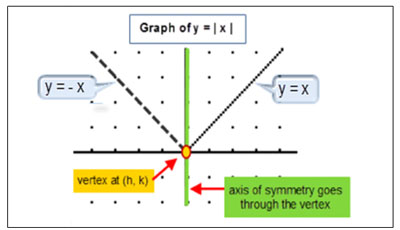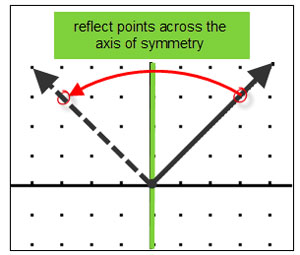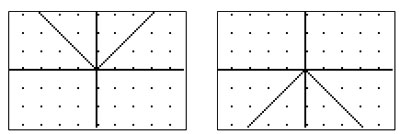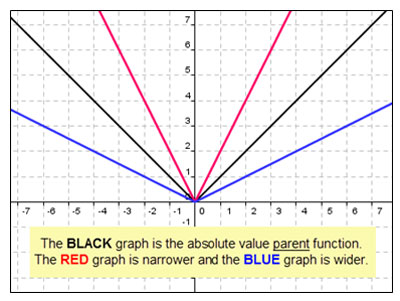What is an absolute value function?
- An absolute value function is a piecewise function whose graph has a “V” shape.
- The vertex form of an absolute value graph function is y = a | x – h | + k
- x and y represent the x-and y-coordinates of any point that lies on the graph
- The constants a, h, and k are called the parameters of the absolute value equation. These constants reveal the shape and location of the graph.
- The most basic absolute value function is y = | x | and is called the parent function.
You may also see it written in function notation as f(x) = | x |

- You can graph it by taking a ray and reflecting it across the vertical line (axis of symmetry) that passes through the ray’s endpoint.

- It is called the absolute value parent function because other absolute value functions can be found by transforming y = | x |.
The affects of “a” on the graph of the absolute value parent graph includes the following:
Close this window or tab to return to the lesson.





